Happy first day of April! No April Fools jokes from my end, but if you come across good ones, send them my way.
Today’s Edition:
TikTok tests Search Ads with select advertisers
YouTube has bigger plans for podcasting than expected
Visa introduces an NFT-focused creator program
TikTok Tests Search Ads With Select Advertisers
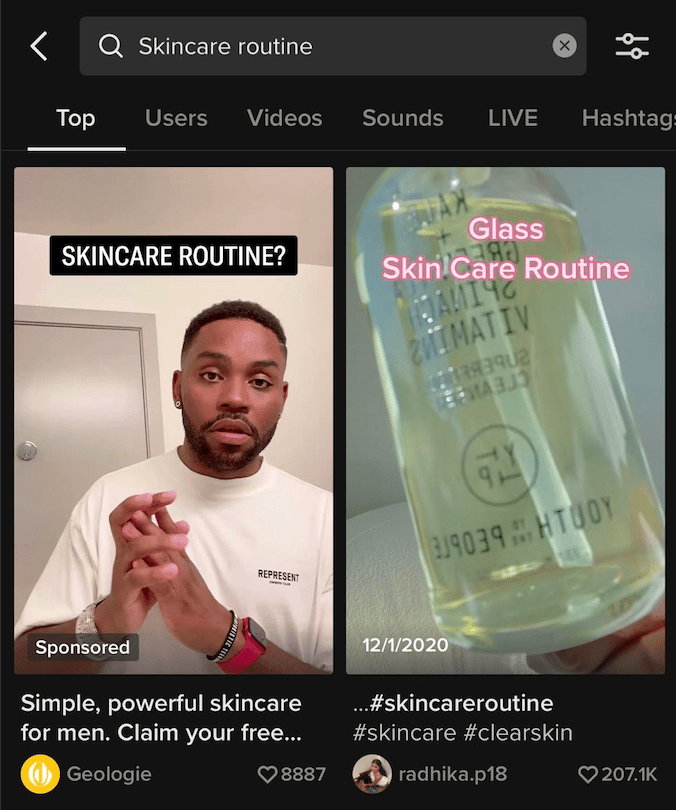
TikTok is currently beta testing Search Ads with select advertisers. Through this option, advertisers can run ads that appear in search based on keywords and terms users search for. Search Ads are labeled "sponsored" and appear at the top of search results.
Advertisers can export a report once ads are running, which displays keywords and terms users used to find ads, along with metrics such as cost per thousand impressions (CPM), click-through rate (CTR), and cost-per-click (CPC).
With TikTok's discovery capabilities, advertisers can reach audiences looking for specific content types and ideas (e.g. skincare routines, makeup tutorials, east dinner recipes, etc.) with Search Ads. As a result, instructional and educational content is particularly effective for this type of ad placement. Using Search Ads in the form of how-tos, tutorials, and other value prop content, advertisers can get their products in front of relevant users with higher purchase intent, resulting in higher ROI. Because of the evergreen nature of Search Ads, they can be a way for advertisers to take an always-on approach with TikTok paid media.
Like other paid media offerings, Search Ads give advertisers access to robust performance data that can aid future organic and paid efforts. By studying the keywords and terms that surfaced ads to users, advertisers can develop SEO-friendly titles, themes, and concepts for future videos that can optimize performance.
Advertisers who work with creators should be particularly excited. Many TikTok creators specialize in educational and instructional content, so advertisers have access to a large pool of creators to create assets to be used as Search Ads. Based on TikTok's recent research, ads made in collaboration with creators are more effective than ones not made in collaboration, so advertisers should lean towards creator content rather than content they create in-house to achieve their business and marketing goals.
Advertisers can already utilize a variety of TikTok ad placements, such as In-Feed Ads, TopView Ads, Brand Takeovers, and Branded Hashtag Challenges. Advertisers now have more options for leveraging the platform's expanding paid media capabilities with Search Ads.
TikTok's increasing power to accelerate discovery to action may cause advertisers to allocate budgets typically allocated for Google Ads to Search Ads on TikTok. As TikTok continues to chase advertising dollars, expect it to bolster its advertising solutions, especially those that bring advertisers and creators together, such as Spark Ads and TikTok Creative Exchange.
Industry News
Pinterest announced expansions to the Pinterest Creator Fund program. Focused on supporting creators from underrepresented backgrounds (e.g. people of color, people with disabilities, and members of the LGBTQIA+ community), the company increased its previous program investment from $500K to $1.2 million and revamped the structure.
The program will run on a quarterly cycle, with new creators participating every three months. Each cycle will focus on different verticals, such as Fashion and Beauty, Food, and Lifestyle and Wellness. Participants will receive $25K in cash grants, ad credits, equipment stipends, and opportunities for brand partnerships, as well as Pinterest training and industry insight from industry experts. The first cohort is sponsored by L'Oréal USA and is targeted at Fashion and Beauty creators.
With the program's expansion, Pinterest continues its efforts to attract up-and-coming creators. By increasing monetary support and adding new components, Pinterest creators can expand their presence. Compared to Meta and TikTok, the Creator Fund is relatively small. However, the overall initiative provides creators with additional value that is more likely to help them achieve sustainable, long-term success.
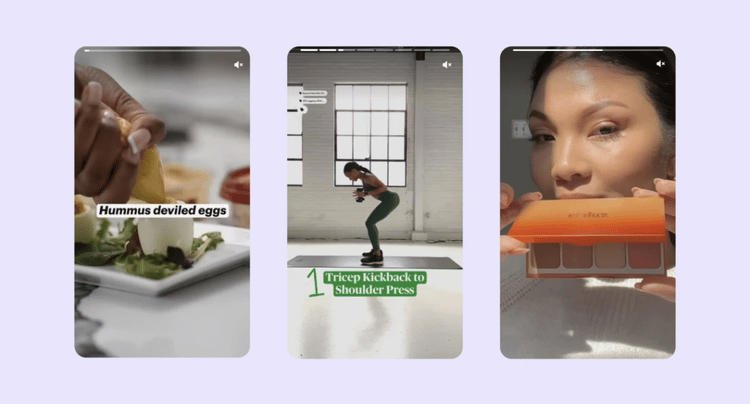
YouTube's podcasting plans were revealed in leaked documents. YouTube has been offering cash grants to podcasters and podcast networks to create video versions of their shows. But, an 84-page presentation that PodNews shared indicates that it intends to do more than just increase the number of shows on the platform. It has bigger ambitions for podcasting, focusing initially on podcast integration, monetization, and analytics.
Here’s a breakdown of each:
Integration: The platform plans to make it easier and simpler for creators to upload podcasts to YouTube through RSS feeds. It also plans to improve search and discovery through a podcast destination page, following at the show level, and podcast cards in search.
Monetization: It plans to grow Google-sold audio ads and launch Partner-sold audio ads to help advertisers reach audio content consumers.
Analytics: It will launch updated analytics with new metrics for audio first creators. Additionally, YouTube data will be integrated with industry-standard measurement platforms such as Podtrack and Nielsen.
YouTube’s dedicated podcasting efforts for creators are significant. It will help them get discovered and allow them to monetize their shows through ads.
Discoverability is one of podcasts' biggest challenges today. YouTube can help solve this based on its proven track record of connecting people with video content they care about most. Spotify and Apple Podcasts are making progress on the discoverability front, but there’s still a lot of room for improvement across the industry.
Commenting is another way YouTube's podcasting efforts can stand out. Major podcast platforms do not allow listeners to comment. YouTube plans to do this, allowing podcasters and brands sponsors to understand content and audience connection better.
Like newsletters, podcasts are another format becoming more intertwined with the social media experience.
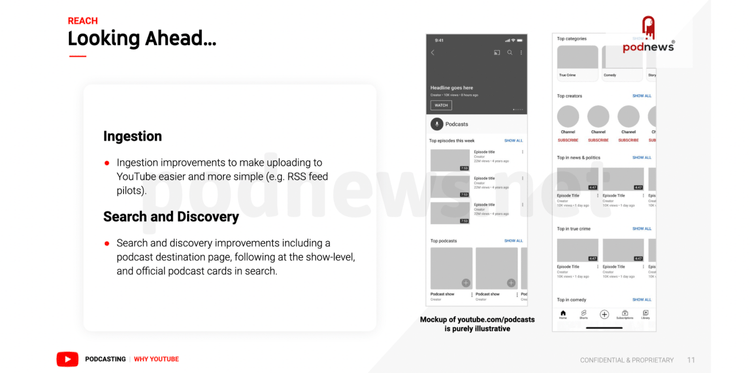
Twitter continues working on Collaborations. The feature was first discovered back in December by mobile developer Alessandro Paluzzi. He recently uncovered more code in Twitter's app that provides further insight. The feature lets users co-author tweets by inviting another account as a collaborator, similar to Instagram's Collabs. When the invitation is accepted, the posted tweet displays both accounts' profile photos and is shared with followers on both accounts.
Collaborations open up new opportunities. If Instagram's Collabs is any indicator, creators will use Collaborations to share content they partner on, such as threads, podcasts, and newsletters, while creators and brands will use it to distribute sponsored content. Collaborations maximize reach and awareness in both cases because the content is shared through two accounts rather than just one.
One specific use case for Collaborations that comes to mind is for name, image, and likeness (NIL) partnerships between student-athletes and brands. Unlike traditional influencer campaigns, NIL deals often involve student-athletes sharing content on Twitter. I expect many student-athletes and their brand partners to use Collaborations to distribute branded content to reach both parties’ audiences.
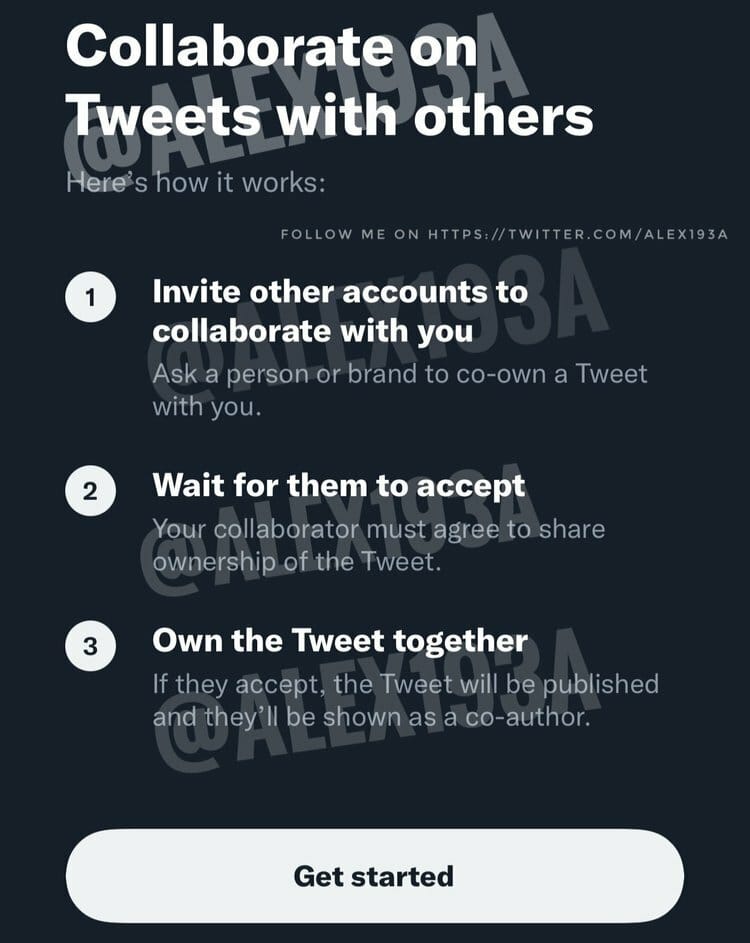
LinkedIn announced several new tools and features for creators. The announcement comes as the company reports that over 5.5 million people have turned on Creator Mode, and 50 percent more people follow people with Creator Mode on. In addition, there is 30 percent more engagement on content generated by those with Creator Mode on.
Here is a breakdown of the latest tools and features:
Creator Analytics: When Creator Mode is enabled, creators can access new analytics on their profile to view new data, such as impressions and engagement trends.
Post Analytics: In-depth analytics for posts, including a breakdown of different types of engagements and demographics of people posts, have reached.
Content Alerts: A subscribe bell on creators' profiles that lets users receive notifications when new content is shared.
Profile Video Tools: Prompts to inspire creators on what to share for their Profile Video, the ability to view how many people have viewed their Profile Video, and an option to display a Profile Video ring in search and feed.
Feature Your Newsletter: LinkedIn Newsletters can be highlighted on creators' profiles so users can subscribe easily.
Thanks to these updates, creators can now better understand how their content performs with different audiences, and leverage additional tools to strengthen their voices and grow their communities.
LinkedIn's mission to become a place for creators is not going unnoticed. Traditional mega creators like MrBeast and superstar athletes like Tom Brady, Kevin Durant, and Odell Beckham Jr. have joined the platform recently.
The combination of new creator experiences and testimonials showing how creators are having success on the platform will attract more creators. Even if creators do not feel like their content fits on the platform right now, they should at the very least try it out. It could be as simple as repurposing existing content or sharing new content that shows the behind-the-scenes side of being a creator.
Outside of reaching new audiences, LinkedIn can be a valuable tool for creators to establish relationships with marketers, which can help them secure opportunities for new brand partnerships.
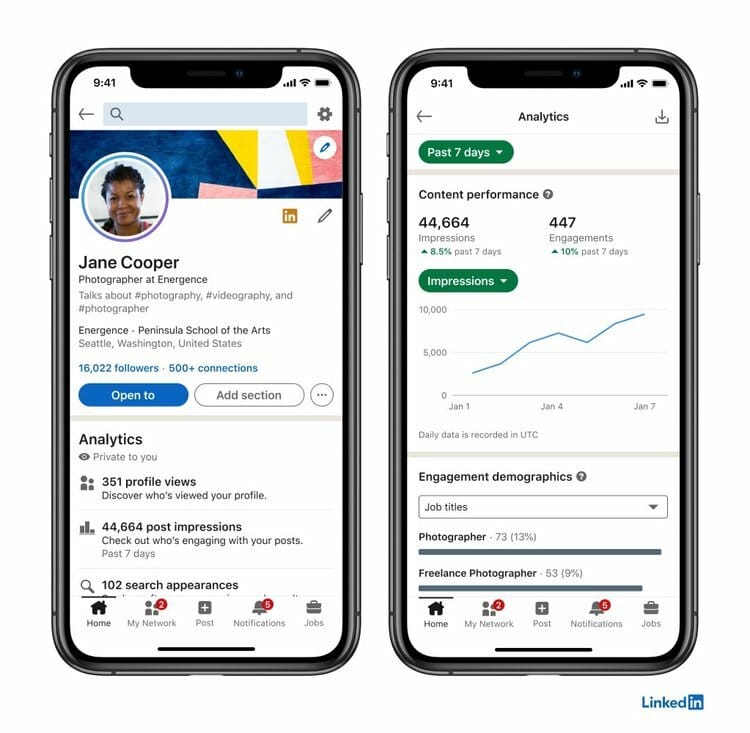
Visa introduces a new creator program. The financial services company recently launched the Visa Creator Program, an initiative aimed at helping digital-first artists, musicians, fashion designers, and filmmakers grow their businesses using non-fungible tokens (NFTs).
The cohort-style program lasts one year, and selected creators are supported in five key areas. Among them are technical and product mentorship from Visa's crypto product and strategy leaders, community building with other NFT enthusiasts, access to thought leaders across Web3, crypto, and payments, opportunities to engage with Visa's clients and partners, and a one-time stipend to help kickstart their growth.
Many longstanding financial services companies were hesitant about Web3, but this has gradually changed over the past six months. As one of the early movers in its industry, Visa has taken notable steps such as building an in-house crypto team and recently purchasing a popular CryptoPunk NFT. Through the Visa Creator Program, Visa will strengthen its Web3 initiatives by providing educational opportunities, networking, and financial assistance to digital-first creators.
Visa is one of the latest companies to launch a program for creators that is not a social media platform. Last week, Hubspot announced its creator program in Hubspot Creators, which has similar components. By supporting creators through programs such as these, companies from all industries can become active participants in the creator economy.

What I’m Reading
How online instrument retailer Sweetwater built out its creator affiliate program (Modern Retail)
Nobody wants more crappy videos on Instagram. Too bad. (Vox)
Who’s making the most from NIL? Women’s basketball is near the top. (Washington Post)
Mountaineer, artist, chef: Meet the new class of beauty influencer (Glossy)
Why this sports podcast network is looking to TikTok to find talent (Marketing Brew)
